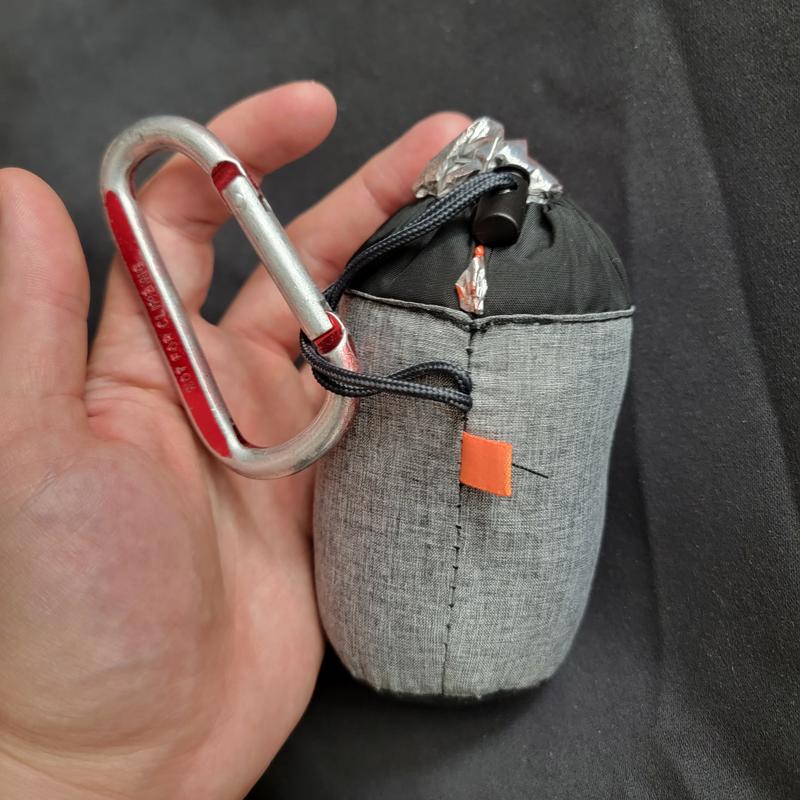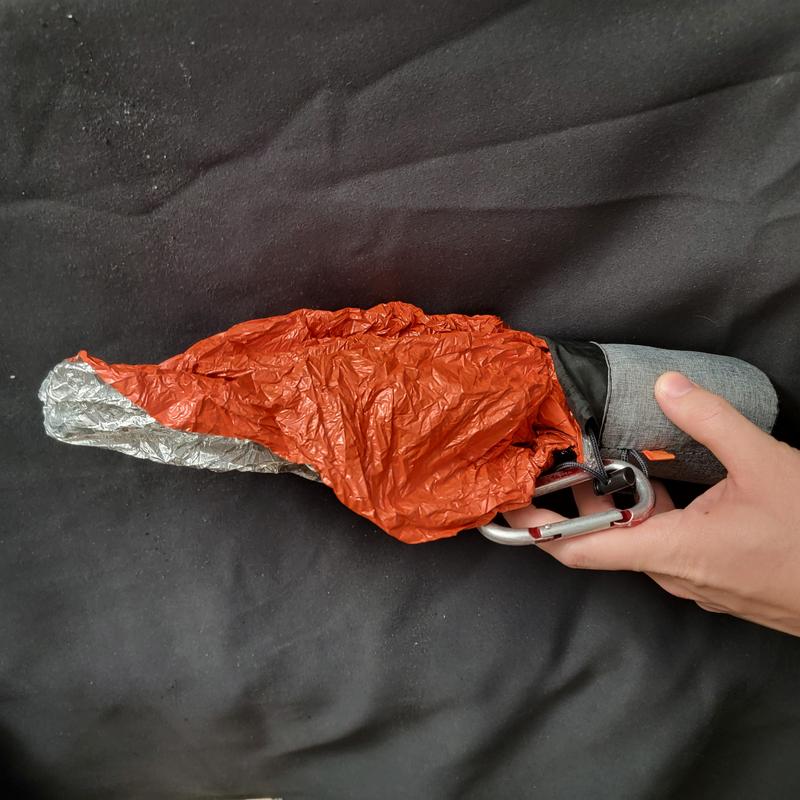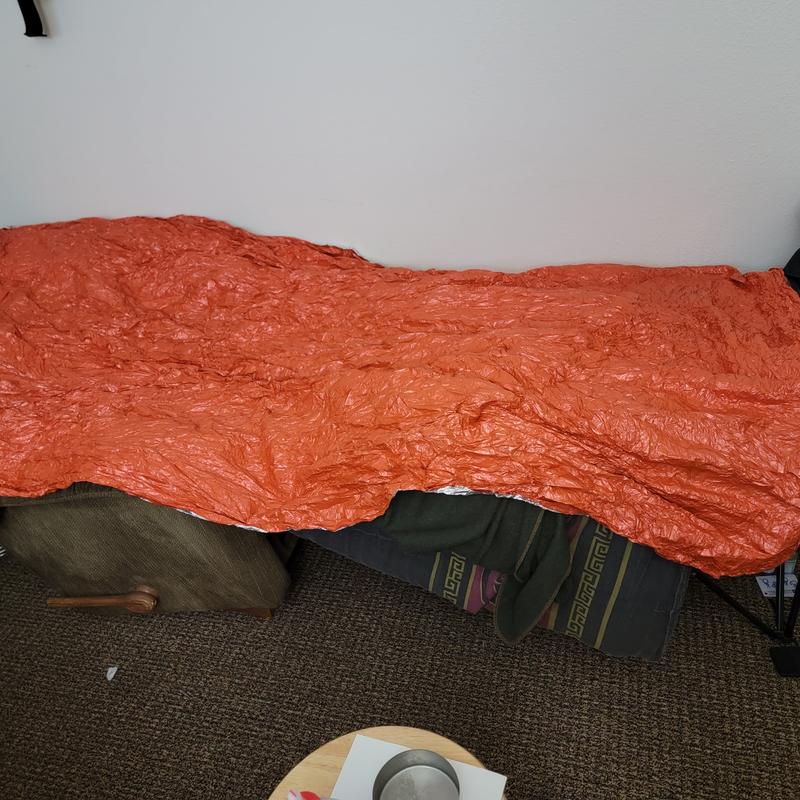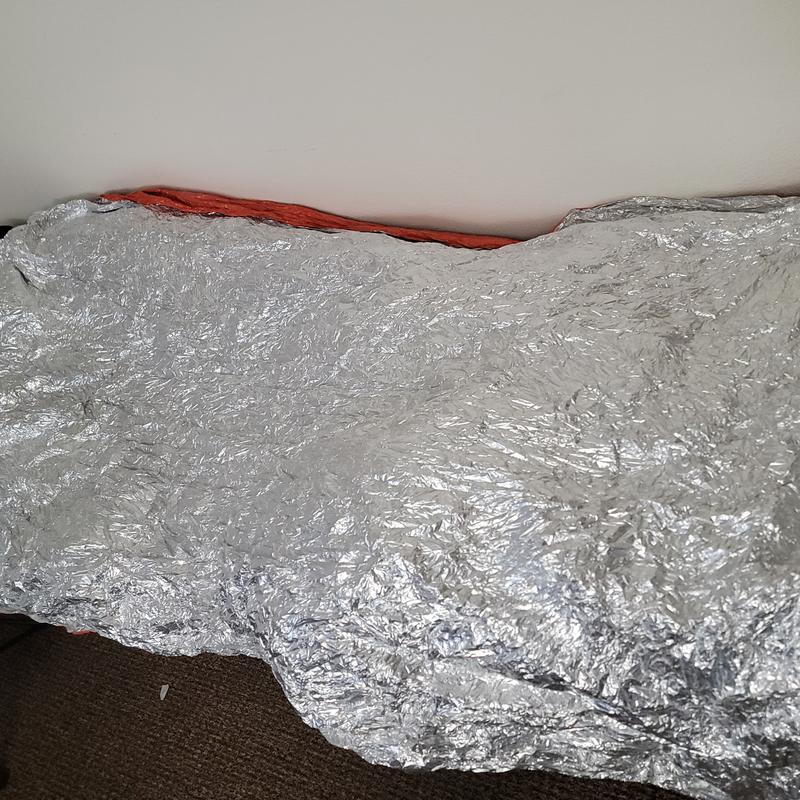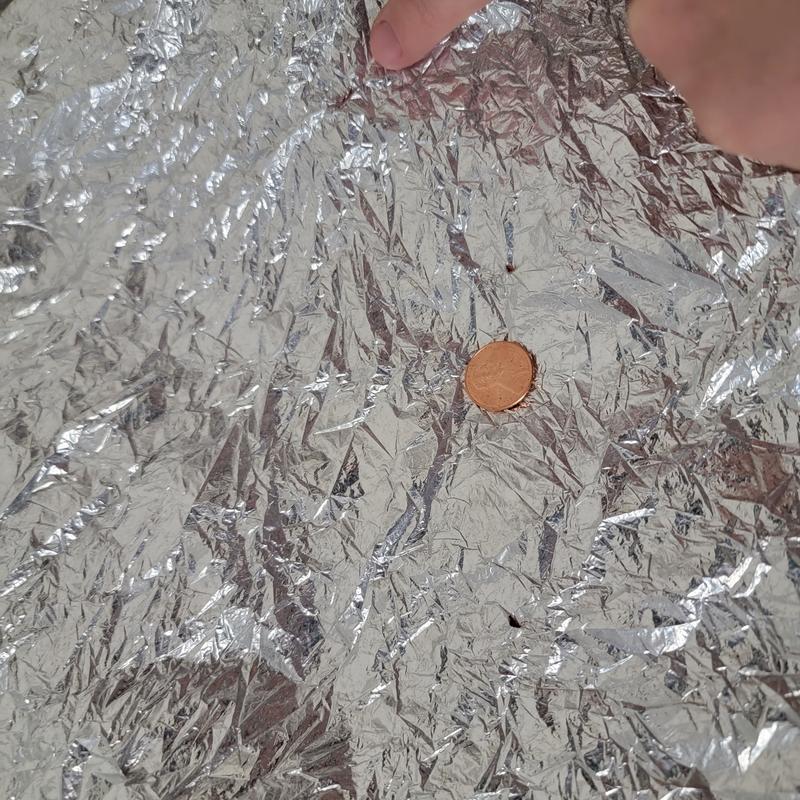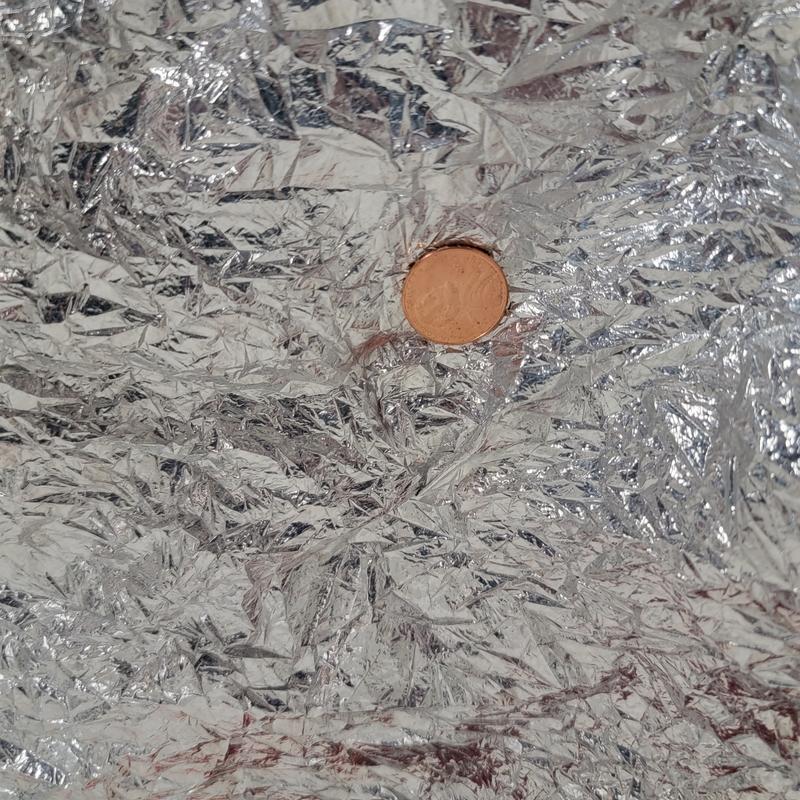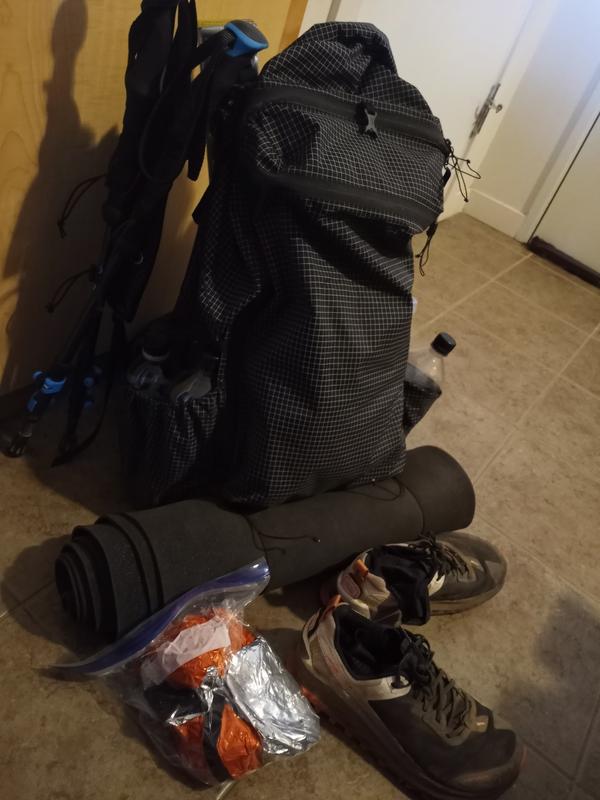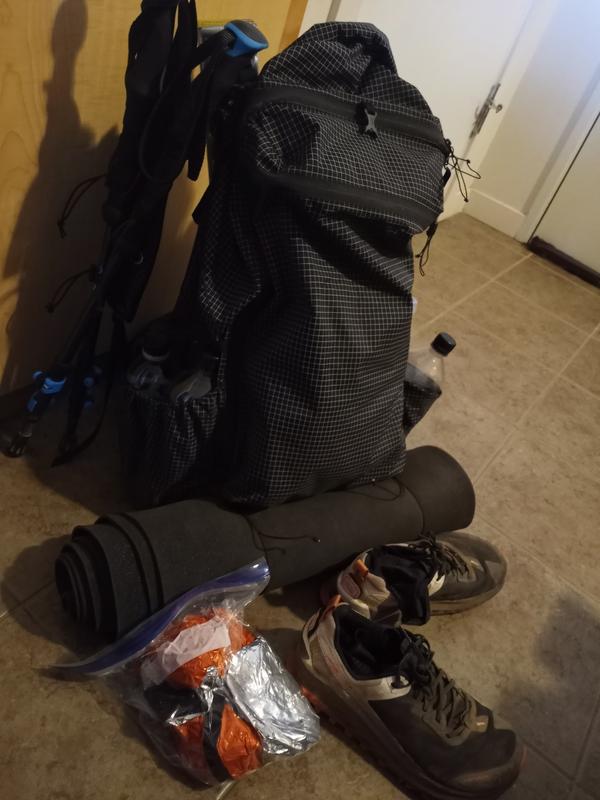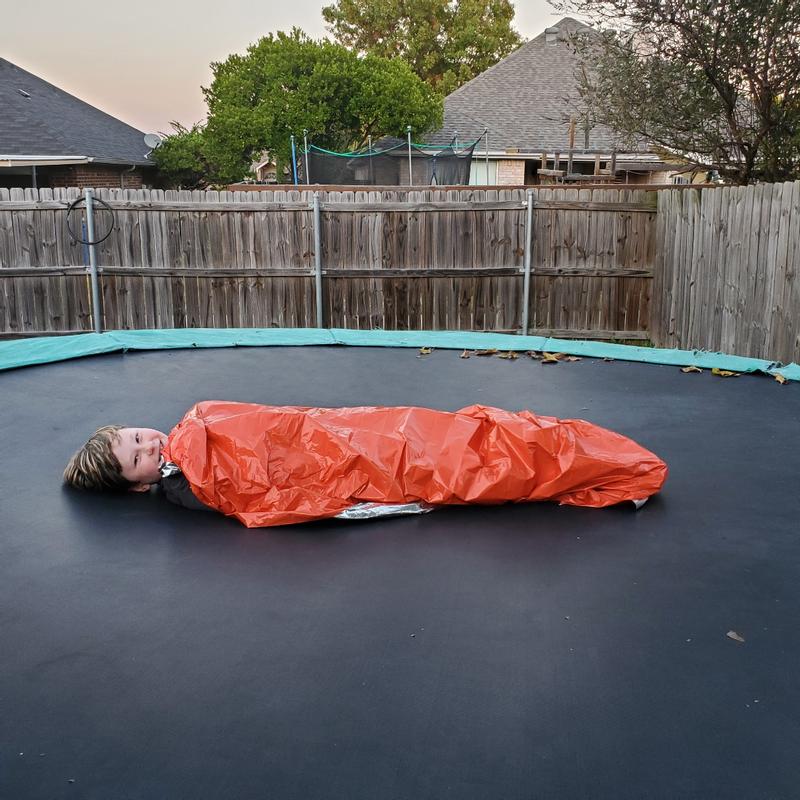SOL Emergency Blanket XL
This product is not available.
Don't get left out in the cold. The SOL Emergency Blanket XL reflects up to 90% of your body's heat back to you and is sized to shelter 1 to 2 adults.
Shop similar products
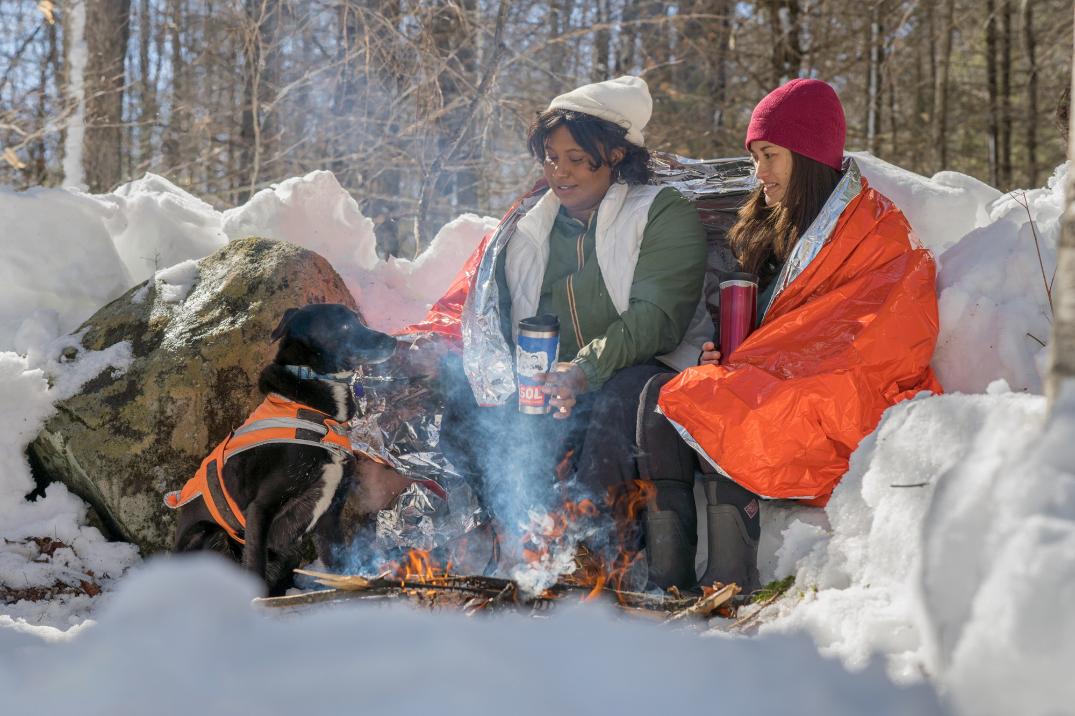


- Bright orange exterior is easy to spot, even in bad weather
- Survival and first-aid instructions are printed directly on the blanket for convenience
- Measures 98 x 58 in. and is sized to shelter 1 or 2 adults
- Blanket provides protection from water and wind
- SOL survival blanket is easy to open and fold in cold weather; folded flat, it's easy to pack
Imported.
View all SOL Emergency Supplies| Best Use | Backpacking |
|---|---|
| Material(s) | Plastic |
| Dimensions | 98 x 58 inches |
| Weight | 3.2 ounces |
Write a Review
Adding a review will require a valid email for verification
Customer Images
Most Helpful Favorable Review
Most Helpful Critical Review
Tough Mylar blanket with an initial strong smell.
[Pro:] *Function: Keeps you warm, *Size: almost large enough to cocoon up in. *Environment: used in an office/warehouse. No exposure to sun or weather. *Longevity/Durable: I've crammed the blanket into a W. 2.5 x H. 4" (hand sized) stuff sack (to avoid regular stress lines from folding) and pulled it out at least 2 times a day for 8~ months to take naps (with my boots and Bk7 Kydex belt holster on). It hasn't ripped and has no signs of elastic stretch marks. The Mylar is holding strong with no spots of delamination. [Con:] When I first started using the blanket. It did have an almost overpowering smell of turpentine. [Improvement:] It was probably not intended to be used so long but a built in compression sack would be nice to have. Like those shopping bags that fold into themselves with a zipper pouch. It could also stand to be a little taller. I'm 5'11" and I can't quite get it over my head and feet at the same time.
Saved a Life While Waiting For Rescue
I rarely review products, but this one deserves it. While exploring off trail in the backcountry on US public land, my group happened upon a group of day hikers. In a feat of foolishness, one of them fell almost 40 feet off a water fall and broke his back, landing in a shallow, rocky river. Over the following hours, as we awaited a team of first responders, this blanket was key in keeping the fall victim dry and warm. I was surprised by its durability when used as a tarp to keep rain off, and compared to other blankets of its kind it is far superior in this regard. The wilderness paramedics who arrived on the scene used it to wrap the victim before backboarding and transport. Best $7 I ever spent and I will never venture out without one.
UL Backpacker puts SOL ER Blanket XL to the test
I tested this emergency blanket in a way I know many of us ULers have been curious about (as a replacement for a low-mid weather sleeping bag). Hopefully you WON'T. First, I would like to remark that the SOL Emergency Blanket XL is impressively sturdy. I've used it for 7 nights, 5 of which I cowboy camped. So, there was a lot of contact between this blanket and the scratchy ground, where the blanket overflowed the sides of my sleeping pad. There are still no rips or flaking. This emergency blanket is in good condition to keep using for what I suspect are at least as many trips again. This emergency blanket is wider compared to SOL's other emergency bivy's and blankets. However, I have still struggled to keep it under me, because of how slippery it is. This year, I used industrial velcro stickies to create a foot box that would stay closed. Success! (Added less than 2oz of weight). Except that my velcro placement accidentally made the upper end of the blanket flare out, resisting my attempts to tuck the upper end around my shoulders. I plan to remedy this in my next attempt to tinker. I took the SOL Emergency Blanket XL backpacking in late September 2022 (Oregon) and late September 2023 (Washington). The temperatures reached at least as low as 44F both times, according to my travel thermometer. I have been miserably cold every time. I've had to put on every piece of clothing I bought, including my extra pair of socks on my hands for gloves. Being the PNW, the air was near saturated with moisture both years, and it rained only for a few minutes total each trip. The inside of the SOL Emergency Blanket XL was thickly covered in condensation both years. In Sept 2022, I stuck my feet in my backpacking, and the trashbag inside of that (brought as a cheap liner), and my clothing stuff sack. In 2023, I forgot the trashbag. I brought a sleeping bag liner this time known for adding warmth), but I did not bring as many warm clothes. (I was really trying to keep a steady base weight.) The sleeping bag liner trade off for warm clothing ended up being about the same in terms of warmth/deficit of it. Although, placing the emergency blanket inside of the sleeping bag liner seemed to keep me warmer than placing it outside of the liner. (Testing both methods for a whole night each.) I am satisfied that I have thoroughly tested (for myself) the potential of the SOL Emergency Blanket XL in 44F, high moisture weather. I don't plan to ever do this to myself intentionally again. This latest trip, the last night the temperature dropped even further than expected. I was not interested in testing where my threshold for hypothermia might be. So, I borrowed the sleeping bag liner of a friend who was along with me. (They had brought a much cozier sleeping system.) Even with a second sleeping bag liner, I was very cold. But, I did manage to sleep more than 3 hours that night. I am giving this product 5 stars. I put it through worse conditions than it was designed for. It is truly rugged and it performed exceptionally. Without it, I would have been hypothermic or dead. (Thank goodness wind speeds were low the times when I wasn't using a tent!) I don't recommend others repeat my experiment in matching conditions. One could wear more baselayers, or bring merino blankets, etc. But, at that point, one might as well bring an actual sleeping bag for the extra weight required not to be completely and thoroughly miserable with cold.
Great back up for shelter, poncho, or blanket.
I do a great deal of work in the back country and this blanket/shelter material is great. Why? It's light weight, stretches when other materials tear, and can be used as a poncho, survival blanket as well as a shelter. The size is large enough to truly keep you covered when you need cover from rain, wind and snow. Well worth keeping in your pack on day hikes or over night campouts.
works great as summertime blanket
Used two times as stand-along in backcountry camping with night temperature around 50-55 deg. F at Zion National Park in early June 2015. It kept me very comfortable with hiking clothes on but without socks. It folds up and goes back into packet nicely. Would probably work well as compliment to lightweight sleeping bag in the 40 deg. range. Definitely worthwhile to have as for emergency use.
Great altralight tent ground cloth
I love the durability of this space blanket. The fact that it stretches instead of tears make it great for places that it might puncture but not for shelters where it is put under tension. I use this for a backpacking ground cloth for my tent as it is almost exactly the right size for the tent. These last many times over the life of a traditional space blanket and are well worth the price if you are going to use one.
Survival blanket
I hike and/or bike some distances from my campsites. I keep this in the bottom of my hydration pack with first aid stuff. As something that I hope to never use, I also have to consider it dead weight. This blanket is big enough for two yet is 77 grams or 2.7 oz. It measures 3”x5”x.5”. This makes it smaller and lighter than any of my other articles of warmth I carry. It is a permanent part of my pack and I recommend this product.
UL backpacker reviewing SOL Emergency Blanket XL
I tested this emergency blanket in a way I know many of us have been curious about (as a replacement for a mid weather sleeping bag), so hopefully you WON'T. First, I would like to remark that the SOL Emergency Blanket XL is impressively sturdy. I've used it for 7 nights, 5 of which I cowboy camped. So, there was a lot of contact between this blanket and the scratchy ground, where the blanket overflowed the sides of my sleeping pad. There are still no rips or flaking. This emergency blanket is in good condition to keep using for what I suspect are at least as many trips again. This emergency blanket is wider compared to SOL's other emergency bivy's and blankets. However, I have still struggled to keep it under me, because of how slippery it is. This year, I used industrial velcro stickies to create a foot box that would stay closed. Success! (Added less than 2oz of weight). Except that my velcro placement accidentally made the upper end of the blanket flare out, resisting my attempts to tuck the upper end around my shoulders. I plan to remedy this in my next attempt to tinker. I took the SOL Emergency Blanket XL backpacking in late September 2022 (Oregon) and late September 2023 (Washington). The temperatures reached at least as low as 44F both times, according to my travel thermometer. I have been miserably cold every time. I've had to put on every piece of clothing I bought, including my extra pair of socks on my hands for gloves. Being the PNW, the air was near saturated with moisture both years, and it rained only for a few minutes total each trip. The inside of the SOL Emergency Blanket XL was thickly covered in condensation both years. In Sept 2022, I stuck my feet in my backpacking, and the trashbag inside of that (brought as a cheap liner), and my clothing stuff sack. In 2023, I forgot the trashbag. I brought a sleeping bag liner this time known for adding warmth), but I did not bring as many warm clothes. (I was really trying to keep a steady base weight.) The sleeping bag liner trade off for warm clothing ended up being about the same in terms of warmth/deficit of it. Although, placing the emergency blanket inside of the sleeping bag liner seemed to keep me warmer than placing it outside of the liner. (Testing both methods for a whole night each.) I am satisfied that I have thoroughly tested (for myself) the potential of the SOL Emergency Blanket XL in 44F, high moisture weather. I don't plan to ever do this to myself intentionally again. This latest trip, the last night the temperature dropped even further than expected. I was not interested in testing where my threshold for hypothermia might be. So, I borrowed the sleeping bag liner of a friend who was along with me. (They had brought a much cozier sleeping system.) Even with a second sleeping bag liner, I was very cold. But, I did manage to sleep more than 3 hours that night. I am giving this product 5 stars. I put it through worse conditions than it was designed for. It is truly rugged and it performed exceptionally. Without it, I would have been hypothermic or dead. (Thank goodness wind speeds were low the times when I wasn't using a tent!) I don't recommend others repeat my experiment in matching conditions. One could wear more baselayers, or bring merino blankets, etc. But, at that point, one might as well bring an actual sleeping bag for the extra weight required not to be completely and thoroughly miserable with cold.
Dependable and Warm
I like these blankets over the traditional or standard mylar blankets. This has a coating on it that allows it to stretch a bit rather than tear outright. These are much more durable. I use them over my down quilt on really cold nights to help keep my body heat in.
Put one in every place you might have an emergency
I have a dozen of these, it is hard for me to know at this point how old each one is and how long they have lasted. Suffice it to say, I use them frequently and well. This rides in all my adventure packs, be it backcountry skiing, backpacking, long trail runs, international travel, you name it. I use them for groundcloths under tents/shelters, have slept rolled up in one in 19 degree weather with only my clothes on (I was cold as cold can be, but I am still here writing this review), signaled a group of hikers from across a canyon, built a temporary shelter and overall just used the snot out of them. They are in all of my vehicles and my kids' school emergency kits where I use the Bivy version. At around 3 oz you would be insane not to have one in your go-bag, IFAK, triage bag, backpack etc. Wouldn't you feel dumb if you died of exposure because you left a 3oz item at home? Well no, I guess you wouldn't, but everyone else might think you were.


